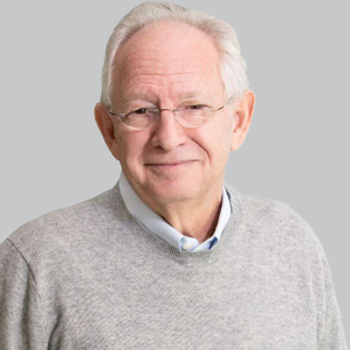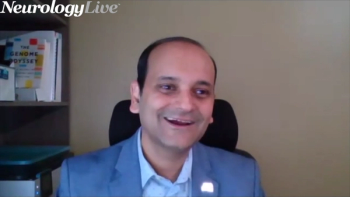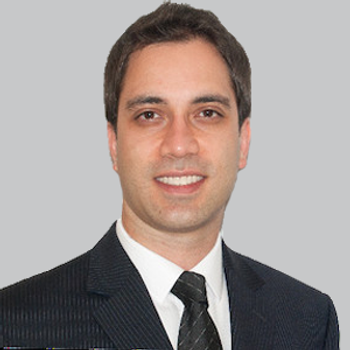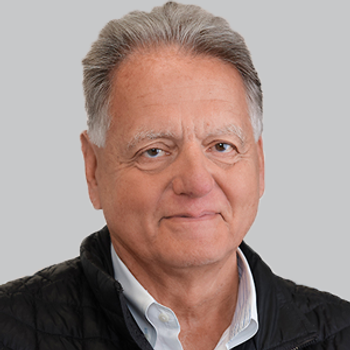
Nipocalimab’s biologics license application is supported by the phase 3 Vivacity-MG3 trial, in which the agent demonstrated superiority over placebo plus standard-of-care over a 24-week period.

Marco Meglio, Assistant Managing Editor for NeurologyLive, has been with the team since October 2019. Follow him on Twitter @marcomeglio1 or email him at [email protected]

Nipocalimab’s biologics license application is supported by the phase 3 Vivacity-MG3 trial, in which the agent demonstrated superiority over placebo plus standard-of-care over a 24-week period.

Early treatment of CIDP, within 1-year of onset, is associated with better long-term outcomes, highlighting key prognostic factors and treatment timing.

Patients who started therapy immediately after the initial attack had a relapse risk of just 11% at 2 years and 20% at 6 and 8 years, compared to much higher rates (41% at 2 years, 56% at 8 years) in those who delayed therapy until a second attack.

According to the median number needed to treat across the 3 analyses, an additional 8-11 individuals would need to be treated with rimegepant 75 mg to result in a comparable responder rate of at least 50% to atogepant 60 mg at week 12.

Adaptive DBS dynamically adjusts stimulation based on patient brain activity, improving therapy customization and motor symptom management in real-time.

The newly announced sham surgery-controlled trial will include 102 patients with moderate PD testing several end points, such as change in ON-time without troublesome dyskinesia, over a 78-week period.

The professor and chair of the Department of Molecular Pathobiology at NYU College of Dentistry discussed groundbreaking research on chronic pain, focusing on the discovery of new mechanisms involving nerve growth factor and its receptors.

The phase 2, placebo-controlled, crossover trial will test whether 50 mg once daily lorundrostat may relieve the severity of upper airway obstruction and reduce nocturnal hypertension.

In the pivotal phase 3 Clarity AD trial, treatment with a subcutaneous autoinjector of lecanemab led to reduced rates of amyloid-related imaging abnormalities while maintaining similar bioequivalence levels to the original formulation.

Eligible participants are ambulatory adults aged 50 or older with mild cognitive impairment or mild Alzheimer disease, confirmed by clinical assessments and a positive amyloid PET scan, and who meet specific health and safety criteria.

James Wheless, MD, FAAP, FAAN, FAES, Le Bonheur Chair in Pediatric Neurology at the University of Tennessee Health Science Center, shared insights on his presentation from AES 2024, focusing on stiripentol, an FDA-approved treatment for Dravet syndrome.

Using a delayed-start analysis, treatment differences on outcomes of ADAS-Cog13 and ADCS-ADL continued to grow larger during weeks 144 and 192 of the open-label extension.

An ongoing phase 2a study of RAP-219 involves adult patients with drug-resistant epilepsy who have an implanted responsive neurostimulation (RNS) device, allowing for real-time monitoring of intracranial EEG data.

Test your neurology knowledge with NeurologyLive®'s weekly quiz series, featuring questions on a variety of clinical and historical neurology topics. This week's topic is on restless legs syndrome.

The SORT-IN-2 trial is a Phase 1b/2a proof-of-concept study evaluating the therapeutic potential of VES001, a novel oral treatment designed to target GRN mutations, which are the root cause of frontotemporal dementia.

Between those infected and uninfected with COVID-19, investigators observed no differences in symptom trajectories, assessed through SymptoMScreen.

The senior vice president of research at The ALS Association discussed the need for standardizing ALS diagnosis across institutions to reduce delays and ensure timely treatment. [WATCH TIME: 4 minutes]

Mind Moments®, a podcast from NeurologyLive®, brings you an exclusive interview with Russell Lebovitz, MD, PhD. [LISTEN TIME: 22 minutes]

Masoud Toloue, chief executive officer at Quanterix, and Nicholas J. Ashton, PhD, senior director of the Banner Health Fluid Biomarker Program, discussed the Simoa technology required to test for p-tau217, the expanding understanding of this biomarker, and the next steps for advancing this research.

Posdinemab, a monoclonal antibody that targets the mid-domain of Alzheimer disease-specific phosphorylated tau, is currently being investigated in a placebo-controlled phase 2b trial that employs a plasma biomarker as a screening tool.

The revised protocol merges the 6-month symptomatic and 18-month disease-modifying studies into a single trial with a 6-month symptomatic readout and a 12-month disease-modifying evaluation.

SGT-212 delivers full-length frataxin via MRI-guided intradentate nucleus infusion and intravenous administration to target mitochondrial dysfunction in neurons and cardiomyocytes, addressing both neurologic and cardiac symptoms.

The global Phase 3 trial aims to enroll ~150 patients with Dravet syndrome who have SCN1A variants, assessing zorevunersen's impact on seizure frequency, behavior, cognition, and safety over 60 weeks, with results expected by 2027.

Lekha Rao, MD, an epileptologist at UCLA Health, discussed the challenges in diagnosing D/EE-SWAS, the importance of early EEG, and the need for greater awareness around this rare and complex epileptic condition.

Despite not meeting its primary and key secondary end points, an exploratory high dose cohort of fosigotifator demonstrated promising results on end points of muscle strength.

Over a 24-week period, DNL343 failed to distinguish itself from placebo on the primary end point of ALSFRS-R, as well as on other secondary end points of muscle strength and respiratory function.

Babitha Haridas, MD, MBBS, a pediatric epileptologist at Johns Hopkins Medicine, discussed the complexities with managing status epilepticus in Lennox-Gastaut syndrome, focusing on the importance of identifying triggers early in their condition.

Most participants showed improvements in motor function, with 61% achieving a clinically meaningful increase in HFMSE scores by week 52 and 41% achieving similar gains in RULM scores.

The ACCORD-2 trial demonstrated a significant reduction in overall worsening compared to placebo, while the ADVANCE-2 trial showed numerically greater improvements without reaching statistical significance.

Ultimately, the biomarkers' temporal patterns may help differentiate attacks from remission, with sGFAP being particularly useful in distinguishing genuine attacks from pseudoattacks.